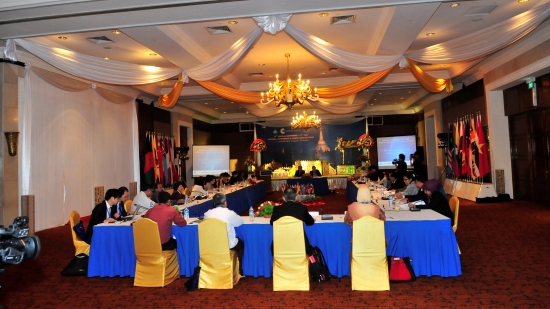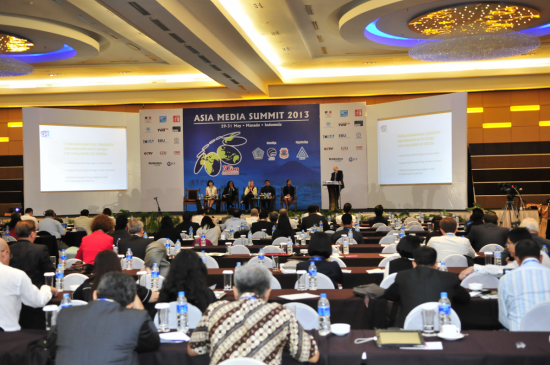The official hosts for the AMS 2014, the Ministry of Culture and Information and the General Commission for Audiovisual Media of the Kingdom of Saudi Arabia, will organise an excursion trip on the 8th of May 2014 around the interesting sites in Jeddah, open for all delegates attending the conference.
Excursion for AMS 2014 Delegates
The official hosts for the AMS 2014, the Ministry of Culture and Information and the General Commission for Audiovisual Media of the Kingdom of Saudi Arabia, will organise an excursion trip on the 8th of May 2014 around the interesting sites in Jeddah, open for all delegates attending the conference.

Delegates are encouraged to sign up for the excursion during the AMS online registration process.
Umrah Trip for AMS 2014 Delegate
The official hosts for the AMS 2014 will also organise Umrah trip for all Muslim delegates attending the 10th AMS Anniversary. Delegates will be taken from Jeddah to Makkah to proceed with the Umrah ritual at the Masjid Al Haram. Following the Umrah, delegates will be taken to the Asslamu Alika Ayuha Annabi Museum to view a short feature on the life of the Prophet Muhammad.

Delegates interested in the Umrah trip are requested to sign up for it during the AMS online registration process.
Online Registration
The deadline for AMS registration of Saturday, 15 March 2014 is fast approaching.
All delegates attending the Asia Media Summit 2014 in Jeddah, Saudi Arabia on 6-8 May 2014 must register online using the link here. Given the extended time taken for visa processing, we are encouraging all delegates to register as soon as possible.
Fascinating Jeddah Tour and Umrah Trip for AMS Delegates
The official hosts for the AMS 2014, the Ministry of Culture and Information and the General Commission for Audiovisual Media of the Kingdom of Saudi Arabia, will organise an excursion trip on the 8th of May 2014 around the interesting sites in Jeddah, open for all delegates attending the conference.
Broadcast Management Workshop in Nepal
From 10 to 14 February 2014, an in-country workshop on Broadcast Management for Senior Managers was held in Kathmandu, Nepal, organised by AIBD, FES and hosted by Nepal Television (NTV).
Impressive Lineup of Pre-Summit Workshops at AMS 2014
AIBD, in collaboration with its partners, will be organising an impressive lineup of pre-summit workshops in advance of the Asia Media Summit (AMS) 2014. Delegates are encouraged to register for one of the workshops below when they complete their online registration for AMS 2014.
World Television Awards Ceremony at AMS 2014
All delegates attending the Asia Media Summit 2014 in Jeddah, Saudi Arabia on 6-8 May 2014 must register online using the link here. Given the extended time taken for visa processing, we are encouraging all delegates to register as early as possible.
The deadline for registration is Monday, 10 March 2014.
Registration Opens for 10th AMS Anniversary
Online registration for the Asia Media Summit (AMS) 2014, the 10th AMS Anniversary to be held on 6-8 May in Jeddah, Kingdom of Saudi Arabia, is now officially open. Please register using the link here. Given the extended time taken for visa processing, we are encouraging all delegates to register as early as possible. The deadline for registration is Monday, 10 March 2014.
Invitation to AMS 2014
The 11th Asia Media Summit 2014 (10th Anniversary of AMS), organised by the Asia-Pacific Institute for Broadcasting Development (AIBD) and hosted by the Ministry of Culture and Information and the General Commission for Audiovisual Media will be held in Jeddah, Saudi Arabia from 6 to 8 May 2014. Several pre-summit events will also be held from 3 - 5 May 2014.
Cambodia to Host GC 2014
AIBD Director Mr. Yang Binyuan paid an official visit to Cambodia from 26 to 29 November 2013 to contribute for successful preparations of the 40th Annual Gathering / 13th AIBD General Conference & Associated Meetings, to be hosted by the Ministry of Information in Phnom Penh, Cambodia from 13 to 15 August 2014.
SPT Endorses AMS 2014 Theme and Topics
The AIBD Strategic Plan Team recently endorsed the proposed theme and topic sessions for the Asia Media Summit 2014 to be held in Jeddah, Saudi Arabia on 6-8 May 2014. SPT members also instructed the AIBD secretariat to work closely with Saudi Arabia’s Ministry of Culture and Information, AMS 2014 host, in planning and implementing the next summit.
Winners Awarded at the Asia Media Summit 2013
Winners of the World Television Awards 2013 were officially announced at the Asia Media Summit in Manado, Indonesia on 29 May 2013. Ms. Moneeza Hashmi, President of the Commonwealth Broadcasting Association (CBA) and General Manager, International Relations, HUM TV, Pakistan announced the winners before some 400 participants at the AMS 2013.
Upwards Asian Broadcasters and Digital Challenges
The Canal France International (CFI), the French operator in media cooperation, in partnership with AIBD, has launched an action programme for Asia, UPWARDS, bringing together international expertise and broadcasters projects.






